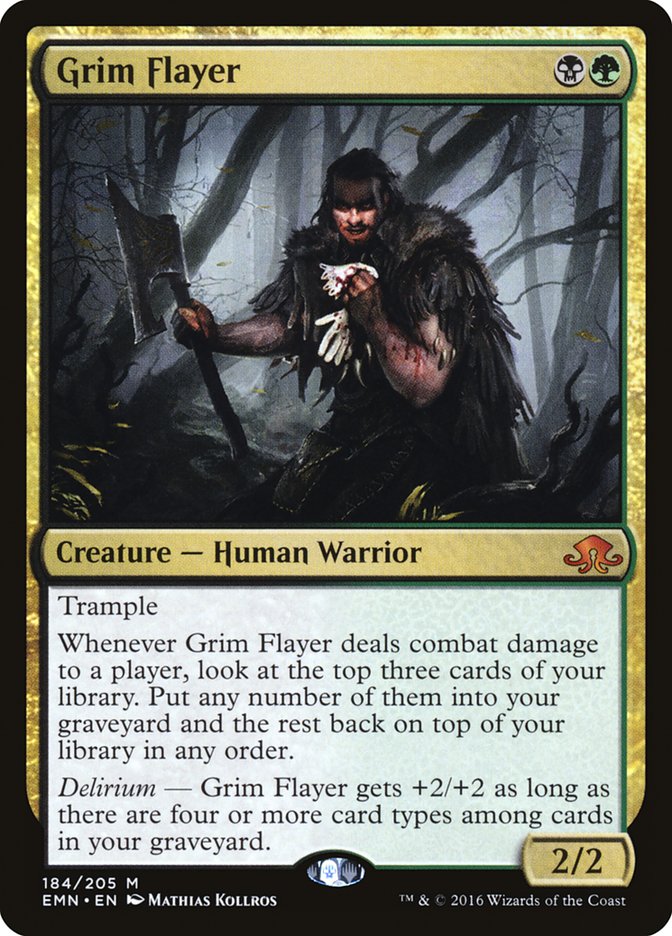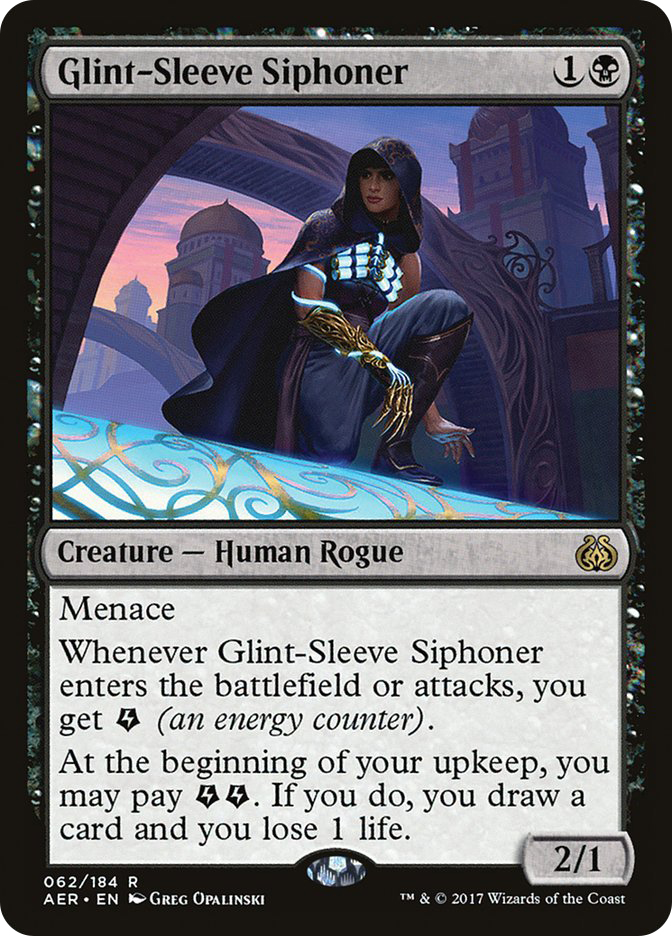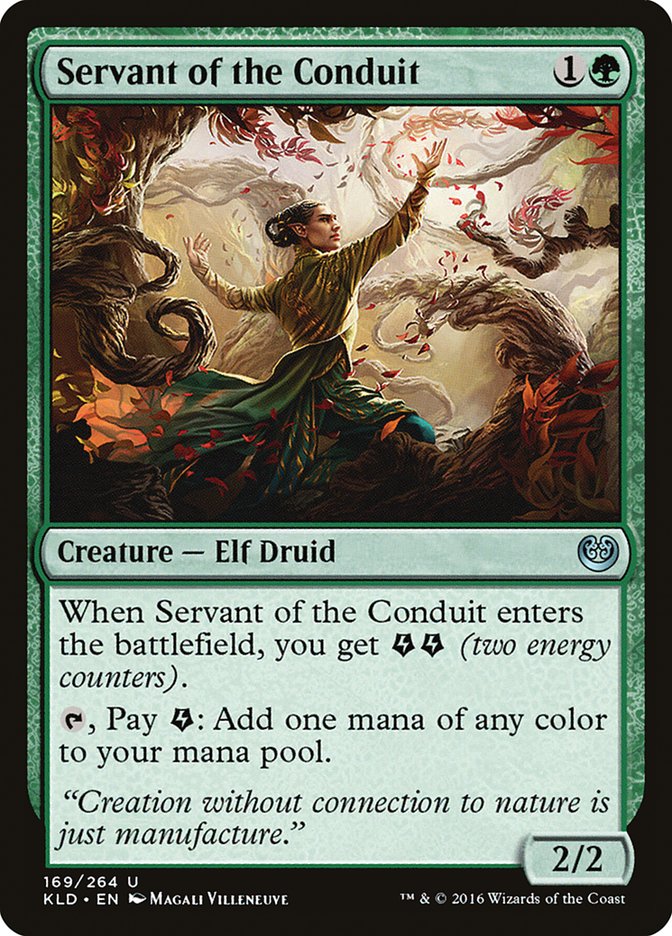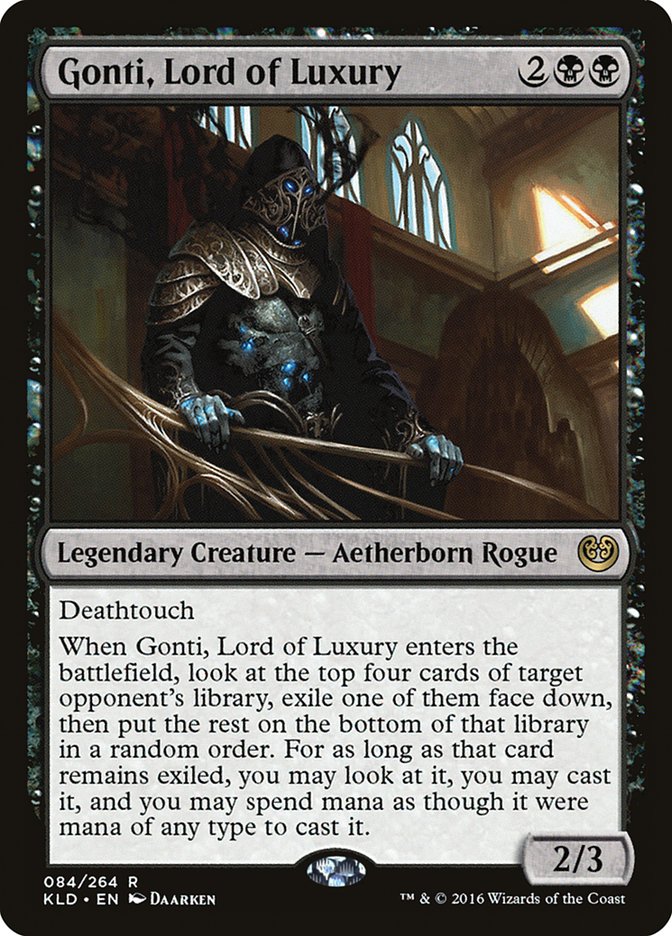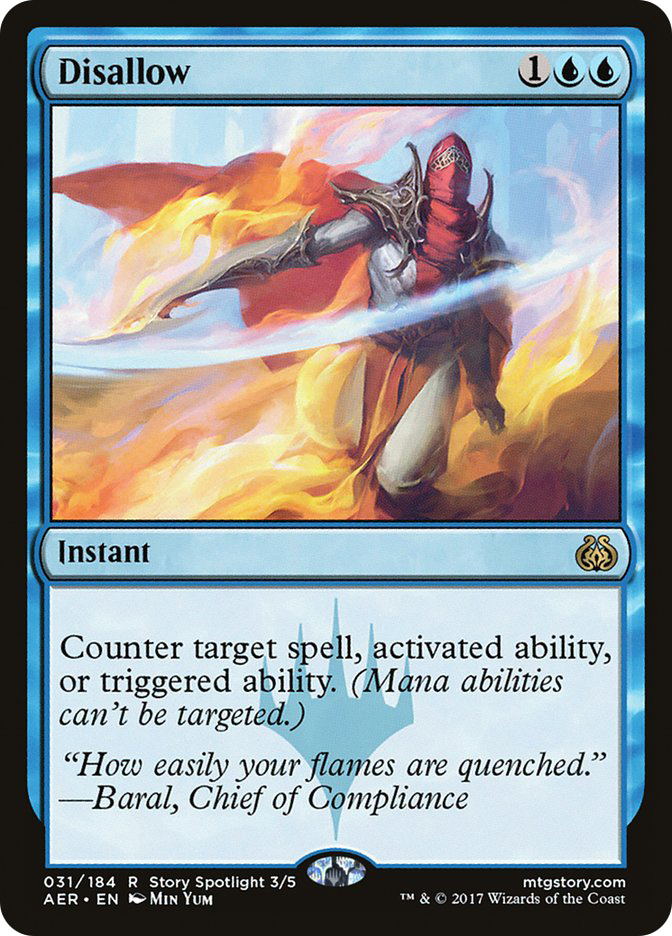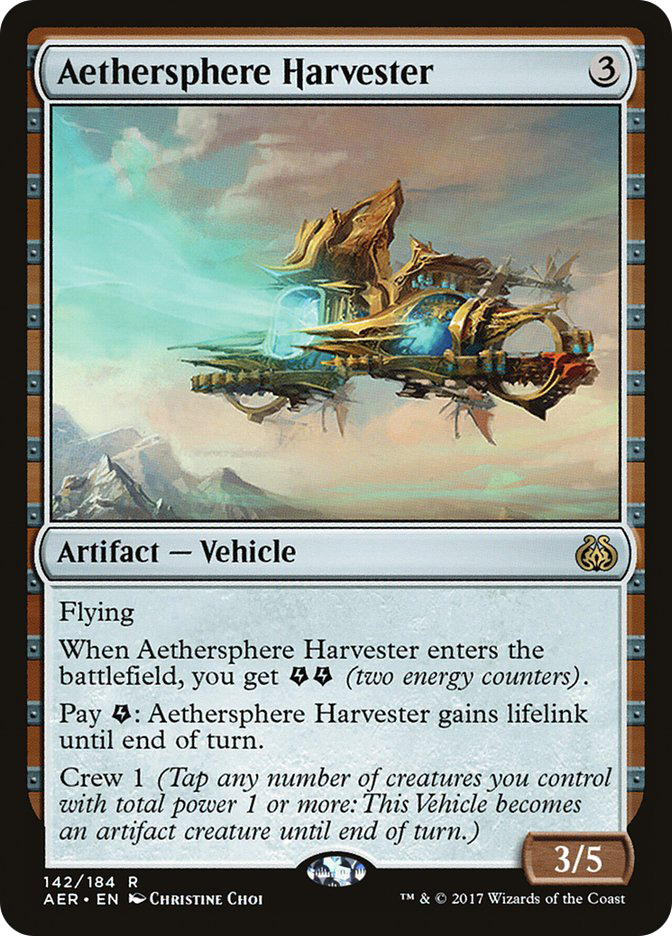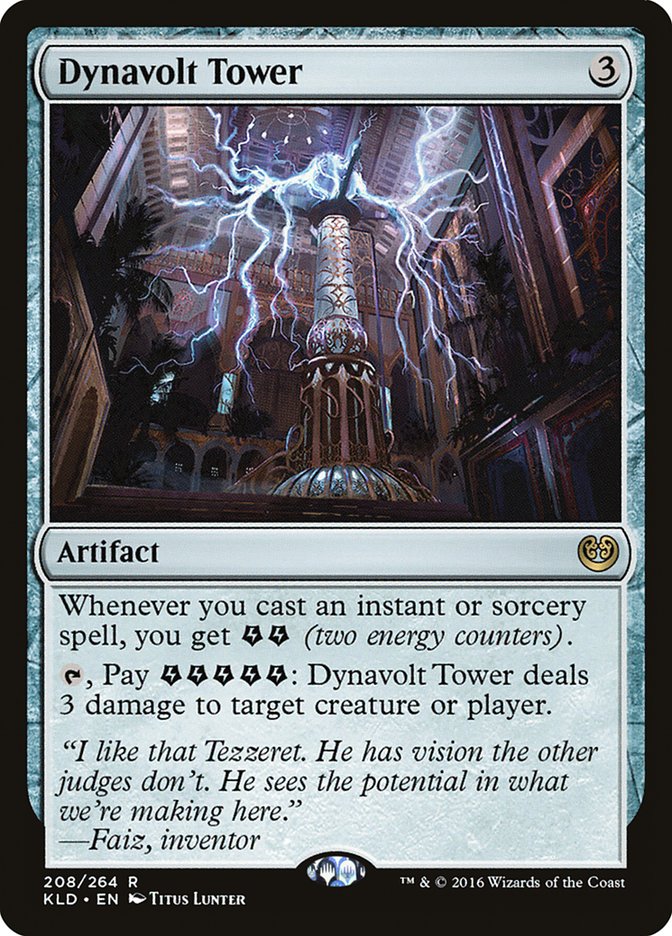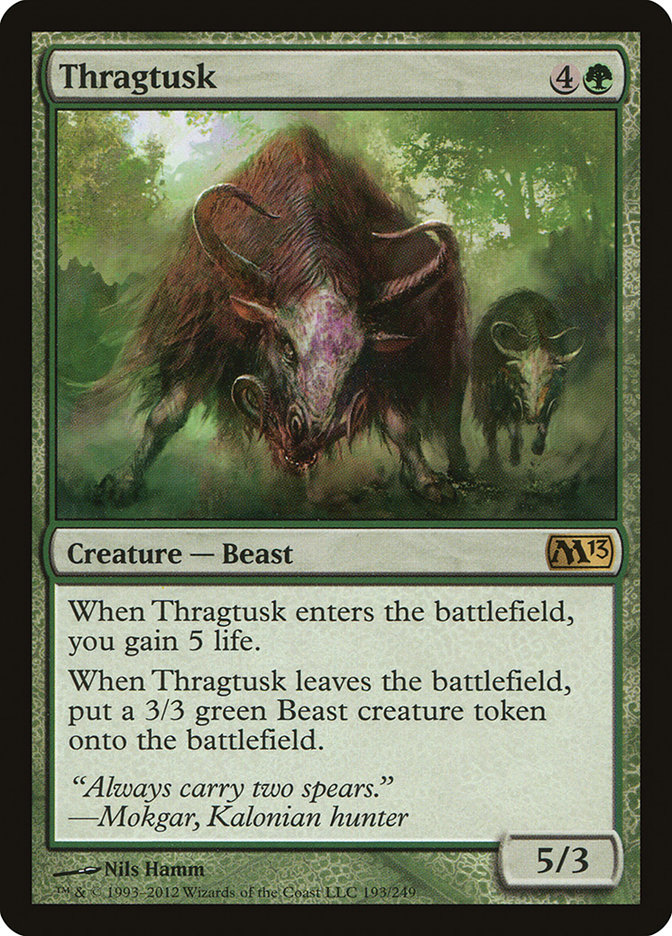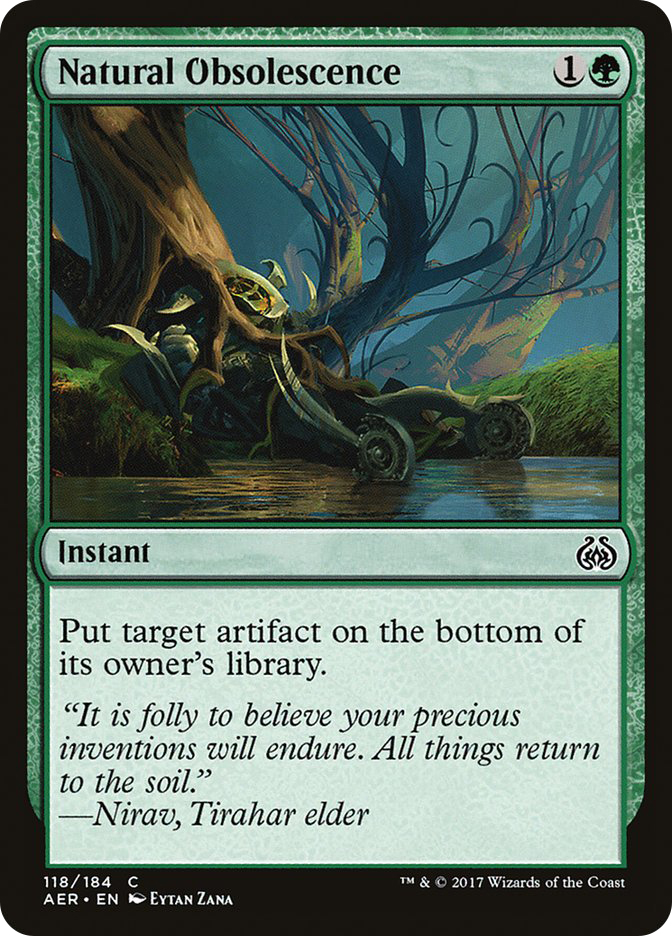For most sitting at home this past weekend, Pro Tour Aether Revolt was the story of Vehicles running over Cats. Mardu Vehicles was the pro response to the past two SCG Tour events where B/G Delirium and Jeskai Saheeli ran rampant. Those who decided to take one of those two decks to the Pro Tour didn’t know what they were getting themselves into, and both had a rough time putting up anything resembling a good result.
I may have not played Mardu Vehicles this past weekend, but that didn’t mean I stayed on the beaten path either. My journey for a good finish involved reading between the lines while I sifted through the SCG results and finding that diamond in the rough no one bothered investigating. Instead of getting hooked on Brennan DeCandio’s B/G Delirium list like everyone else, I went one finish lower.
Creatures (25)
- 2 Kalitas, Traitor of Ghet
- 3 Tireless Tracker
- 2 Verdurous Gearhulk
- 4 Servant of the Conduit
- 4 Winding Constrictor
- 3 Rishkar, Peema Renegade
- 4 Glint-Sleeve Siphoner
- 3 Walking Ballista
Planeswalkers (2)
Lands (24)
Spells (9)

On the surface, Stephen’s list doesn’t look pretty, which is the main reason why I think it was disregarded by the masses. Two random Kalitas, Traitor of Ghet; only two Verdurous Gearhulks; and just a random smattering of spells made it look awkward. Well, that and the fact that Brennan DeCandio stole the storyline by winning back-to-back Opens. Stephen Dykman’s list got ignored due to an authoritative bias everyone had! I found this funny as I watched it happen in real-time while waiting for my article on deck selection bias to be posted on StarCityGames.com.
Delirium builds of B/G do have some things going for them, but not enough in my book to be better than the energy shell. It all has to do with ceilings and floors. Grim Flayer for example has a very impressive ceiling, but at the same time its floor is just sitting on the battlefield and staring at other creatures as it neglects attacking or blocking. The same can be said for Mindwrack Demon. Sometimes it will kill Gideon, Ally of Zendikar or even an opponent with the help of Verdurous Gearhulk, but at the same time, delirium could be missed at it begins to turn on you.
The energy creatures might not be as flashy as those in the Delirium shells, but what they lack in explosiveness is made up in efficiency. Glint-Sleeve Siphoner, for example, is a great creature to simply put onto the battlefield and see how an opponent will react to it.
More often than not, they will kill it on the spot rather than let you draw extra cards, but the information gained by how they proceed can give away a ton of information about what their hand looks like. If it lives, they probably don’t have a removal spell, letting you know their following turns will be very proactive. Many times did I play accordingly when it lived, but I also enjoyed being up a card. The card also has menace, making it a decent aggressive element. The card overperformed in initial testing, while Grim Flayer didn’t live up to the hype.
Servant of the Conduit is in the same boat. It’s not the strongest play on turn 2, but at the same time it’s often the best one to deploy. It’s not the end of the world if it dies, but upon living it accelerates out your hand and can also allow you to cast two synergistic spells in the same turn, like Tireless Tracker / Fatal Push or Winding Constrictor / Walking Ballista. The energy gained by it can sometimes be dumped into other cards like Aethersphere Harvester or vice versa, giving the deck one of its biggest strengths.
The first thing I did to Stephen’s list was get rid of Kalitas, Traitor of Ghet to make room for additional copies of everyone’s favorite Spectral Force. I also didn’t like how all the three-drops operated together, so I replaced Nissa, Voice of Zendikar with what I think is the most slept-on card from Kaladesh.
Gonti, Lord of Luxury is just a great card that didn’t have time to shine last format, thanks to the crippling combination of Reflector Mage, Spell Queller, and Gideon, Ally of Zendikar. Four-drops were at their worst last format, which is why you had to play the most impactful ones if you even chose to make room for them in your deck. Gonti, Lord of Luxury didn’t meet the criteria, but thanks to the bannings, the card found a new life in a format perfectly set up for it.
I would love to take credit on this find, but that has to go to Team Genesis member Seth Manfield. He was high on the card right out of the gates, but he was trying to make B/G Delirium Control a functioning deck. I wasn’t about the Ishkanah, Grafwidow life, so I tried it in B/G Energy Aggro under the assumption that it would be good against the mirror, given Gonti will always block thanks to deathtouch. Gonti also would give us more shots at finding Verdurous Gearhulk or Fatal Push, which are easily the most important cards in the “mirror matches.” It didn’t take long to realize how good this card was, and soon we were building our entire sideboard strategy around this innocuous two-of.
It’s difficult to explain exactly why Gonti, Lord of Luxury is so good. On the surface it’s simple card advantage, which is nice because the body always will get a trade, but it’s much more than that. The ability to look at four cards instead of just one makes that one card even more valuable than, say, drawing a card. It’s also just absurd to get to cast a card your opponent has access to when playing the colors black and green.
This color combination is designed to have powerful creatures and removal, but at a reduced rate compared to other colors. It’s a strong strategy, but that’s all you get. Gonti, Lord of Luxury all of sudden changes that. Sure, you can hit their Fatal Push, which is really nice, but you can also hit a Jeskai Control player’s Disallow and counter their Torrential Gearhulk.
What about your Mardu Vehicles opponent’s Pia Nalaar and sacrificing your Clues to push through damage and pump a Tireless Tracker? We can even Shock our opponent’s Saheeli Rai being targeted by Felidar Guardian! They’re all things my teammates and I did at the Pro Tour! Trust me when I say this card is great, and that we’ve just started scratching the surface of its true potential.
The third copy of Gonti, Lord of Luxury in the sideboard might seem out of place, but it’s simply a product of my deep philosophy on Constructed Magic. Too many copies in Game 1 can cause a “flooding” effect with legendary permanents, but post-sideboard games tend to play out with more interaction. Gonti, Lord of Luxury tended to die more in sideboard games, allowing additional copies to be more valuable. That, and the fact that most opponents’ “anti-midrange” cards they would sideboard in ended up being good against them as well. I brought in the third copy of Gonti, Lord of Luxury in all ten matchups.
Moving on, the key card that makes B/G Energy better than B/G Delirium is Aethersphere Harvester. Seriously, I can’t believe more people haven’t been building around this card. The biggest issue I’ve seen with other builds of B/G has been their lack of cards that mitigate the effects of being on the draw. You can’t just build your deck with a slew of Nissa, Voice of Zendikar; Scrapheap Scrounger; Tireless Tracker; and Rishkar, Peema Renegade and expect to win games when you lose the die roll.
Aethersphere Harvester is one of the only ways I’ve found to steal games on the draw in the mirror when they are able to curve out a Verdurous Gearhulk. Almost anything else will eventually get trampled over, but this Vehicle can get four crucial +1/+1 counters from your Verdurous Gearhulk and start racing back. It’s also a great card to combat Mardu Vehicles, but we will get to that later.
Here’s the list we ended up on.
Creatures (27)
- 3 Tireless Tracker
- 2 Gonti, Lord of Luxury
- 4 Verdurous Gearhulk
- 4 Servant of the Conduit
- 4 Winding Constrictor
- 2 Rishkar, Peema Renegade
- 4 Glint-Sleeve Siphoner
- 4 Walking Ballista
Lands (24)
Spells (9)

I’m seriously in heaven every time I get to tune a durdly B/G midrange deck to beat other durdly B/G midrange decks while also crafting a sideboard to beat control, and that’s exactly what I was able to do for this Pro Tour. In my opinion, this sideboard was a work of art! I also believe we saw Jeskai Saheeli do so well at SCG Richmond due to the lack of innovation in most B/G sideboards. Those lists really didn’t have a good plan against control decks, which left them vulnerable to those who put in the work finding ways for Jeskai decks to beat B/G Delirium.
The plan against Control is pretty straightforward by design, but the play patterns it creates are fairly unconventional.
Sideboard Out:
Sideboard In:
There are random nuances to learn when sideboarding against control decks, but this is the most basic sideboard configuration I use. You might take out another Grasp of Darkness for the second Appetite of the Unnatural if you saw Dynavolt Tower, for example. Don’t be too hasty on cutting Grasp of Darkness, though. Most control decks have some sort of a transformational threat they like to bring in against decks like B/G.
This “transformational” sideboard plan switches the roles against control decks but does lean fairly heavily on resolving a Lifecrafter’s Bestiary. You could say the plan is “all-in,” but it’s built that way due to how powerful the three-mana artifact is against control. Once online, the card advantage is almost unbeatable from the control side. The only way you lose these games is by them tempoing you out with Torrential Gearhulks or Thing in the Ice, which is why we have so much removal in against them after sideboarding. The games will go long, but you will always be in the driver’s seat as long as Lifecrafter’s Bestiary is on the battlefield.
You’re allowed to afford this many dedicated slots for control in the sideboard thanks to the fact that the deck doesn’t need that much elsewhere. Fatal Push and some artifact removal is about all you need to keep the Mardu Vehicles matchup good, and the same can be said for the “mirror.” Transgress the Mind’s about all you need for Four-Color Saheeli, and it’s also decent on the draw in the mirror.
Most of Team Genesis came to PT Aether Revolt with a Jeskai Control deck featuring Dynavolt Tower. Seth Manfield, Christoffer Larsen, Corey Baumeister, and I didn’t feel comfortable taking a control deck into battle, so we worked diligently on B/G Energy. Our matchup against the Jeskai Control deck wasn’t great, which did keep our expectations in check. It’s irrational, but knowingly choosing a deck that loses to the other team deck does feel pretty bad, even if the decision has merit.
For me, I’ve never felt comfortable taking control decks to Pro Tours. Sometimes they are the best-performing decks, but often the curveballs thrown at Pro Tours can keep a well-tuned control deck from ever being good enough. I just assumed the reactions to B/G Delirium and Jeskai Saheeli would be severe enough to make the control deck a bad choice in retrospect. I also like green creatures. Like, a lot.
Fast forward to the end of Round 4, and my brother Corey and I are jumping up and down like giddy children as we heard that almost a quarter of the field was playing Mardu Vehicles, a matchup we tested against and felt to be one of our best, given how good Aethersphere Harvester proved to be against them in our testing.
We honestly only tested the matchup, because it was one of the limited decks to come out of the SCG Tour. I thought it would be five to ten percent of the field at most. I didn’t like the deck’s fail rate caused by mana issues or its inability to win on the draw consistently. I did, however, know the deck had a good control matchup, which is why I was so relieved that we didn’t play counterspells like the rest of our team. Sure, I felt bad for them, but it was difficult to be that discouraged when I felt like I might be playing the best deck in the room.
Ten rounds and eight wins in Constructed later, that’s exactly how I felt. One of my losses was to my teammate Lukas Blohon, and the other was to Ben Rubin, which might have been one of the best matches I’ve ever played on the Pro Tour. It was amazing to watch him dismantle my great draws in Games 2 and 3. In that match, he showed me what Hall of Fame-caliber play looked like. He knocked me out of Top 8 contention, and I couldn’t even be mad.
I ended up going 8-2 with the deck over the course of the first two days of competition. My middling tiebreakers kept me out of Top 8, but I’ll never be upset going 12-4 at a Pro Tour. A full fifteen points later, and all of a sudden my sights can realistically be set for Platinum and Worlds again. I’m also most likely going to be running the deck back at Grand Prix Pittsburgh this weekend with some minor changes.
The first is a replacement of Appetite of the Unnatural for Natural Obsolescence. I wanted to hedge against cards like Stasis Snare and Quarantine Field going into the Pro Tour, but I expect spells like this will not be an issue moving forward. Past that, I don’t know what I want to change about the list. It honestly felt great, and I suggest giving it a shot if you don’t have your mind made up on what to play moving forward.


